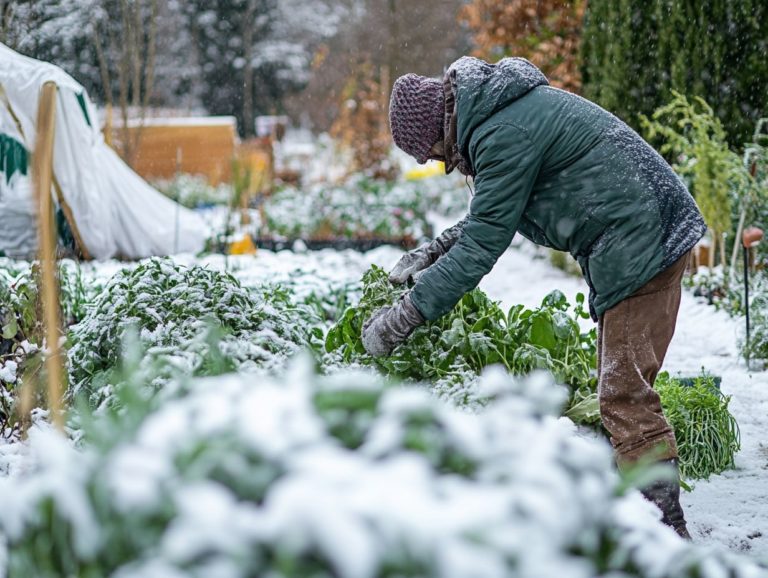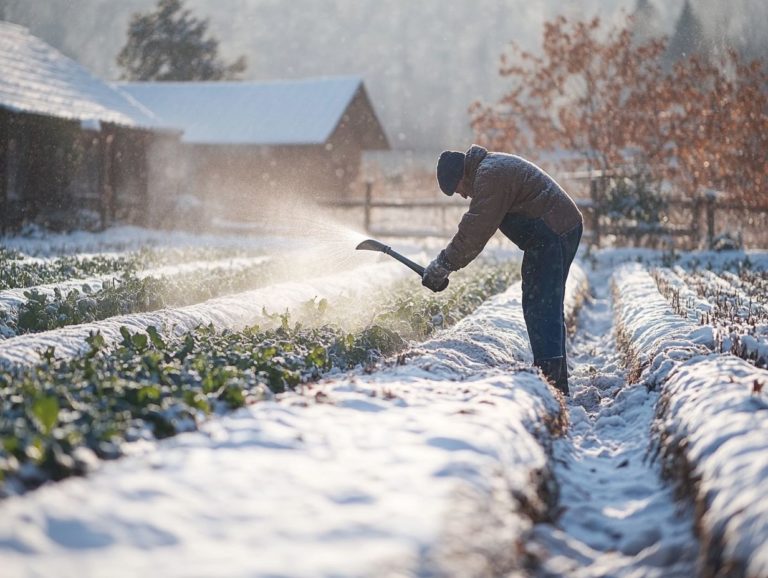How to Use Heat Mats for Cold-Weather Crops
Gardening in colder climates offers its own set of challenges, especially when nurturing those delicate plants you love.
Heat mats can be a game changer. They provide the warmth necessary for successful germination and growth. This article delves into what heat mats are, their advantages for cold-weather crops, and how to select the perfect one for your needs.
You’ll also find valuable tips for effective use and common pitfalls to avoid. This will ensure you maximize your gardening efforts, even in frosty conditions.
Get ready to transform your gardening game today!
Contents
Key Takeaways:
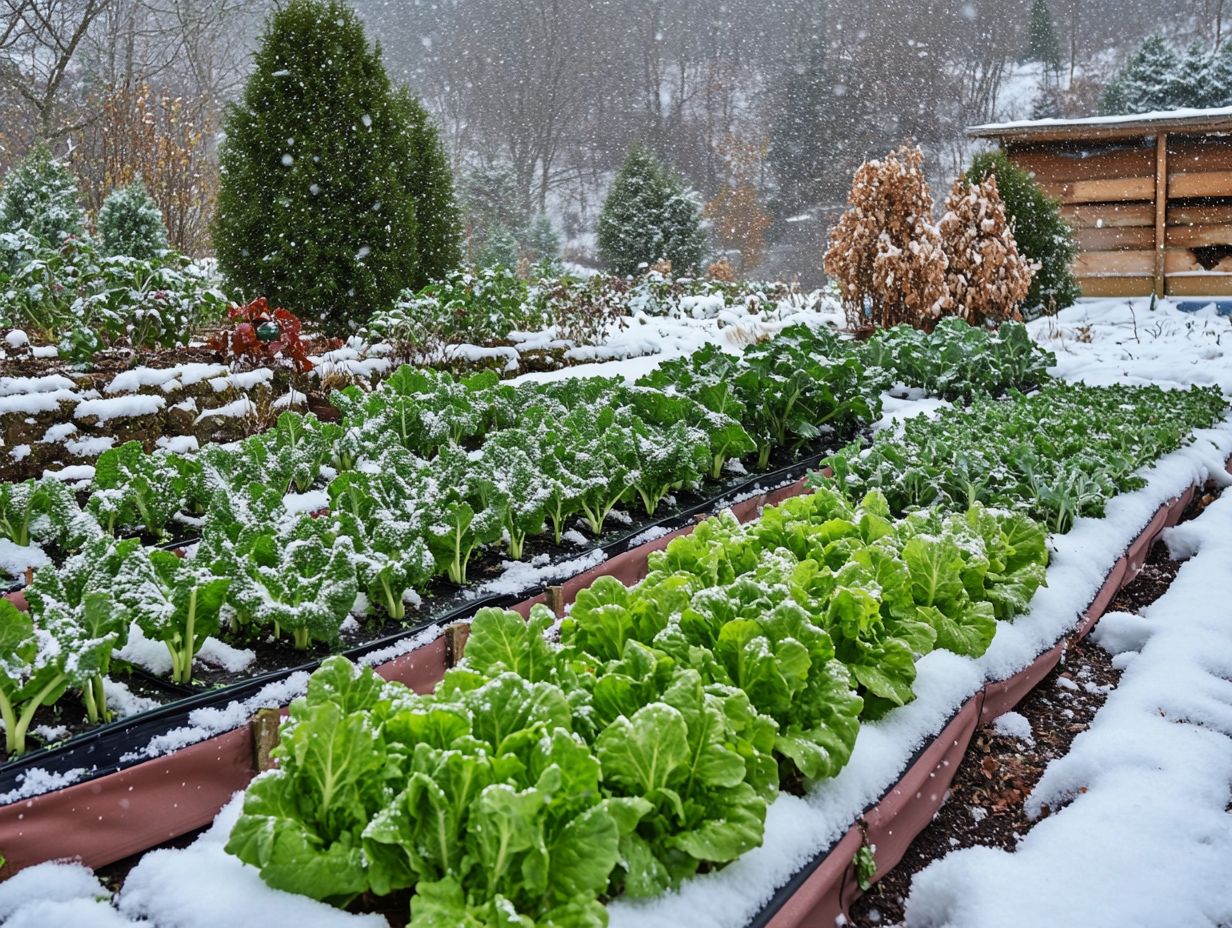
- Learn the benefits of heat mats for your cold-weather crops to boost germination and growth.
- Select the right heat mat and place it correctly for maximum effectiveness in cold conditions.
- Understand how to set up heat mats, including temperature control and insulation, for thriving crops.
Understanding Heat Mats
Understanding heat mats is vital for gardeners. They help optimize the seed starting process, especially for cold-weather crops. Heat mats, like the Epic Seed Starting Heat Mat, offer a consistent temperature range that can greatly enhance the germination process for various seeds.
By maintaining the ideal soil temperature, these essential tools enable seeds to germinate more quickly. They also encourage healthy seedlings to develop robust roots, setting the stage for a successful growing season. Effective temperature control helps manage the surrounding environment, which is crucial for successful indoor gardening.
What are Heat Mats and How do They Work?
Heat mats are specialized devices designed to provide consistent warmth to seed trays and seedlings. This warmth is essential for optimizing the germination process.
These mats typically have electric heating elements that distribute warmth evenly across their surfaces. This creates a stable environment for young plants. By utilizing thermostats, they maintain ideal temperature levels, preventing fluctuations that could impede seed development. This regulated warmth accelerates germination and fosters strong root growth, a vital component during the early stages of plant life.
For gardeners seeking thriving seedlings, understanding how heat mats function and how they interact with environmental factors can significantly elevate their planting success.
Benefits of Using Heat Mats for Cold-Weather Crops
Using heat mats for your cold-weather crops presents many advantages that elevate both germination and overall growth. These must-have heating mats for cold-climate gardening make them essential for those passionate about indoor gardening.
By maintaining a consistent and controlled soil temperature, heat mats foster the germination of vegetable seeds like tomatoes, peppers, and zucchini, which thrive in warmer conditions. The optimal growth environment created by these mats can notably reduce germination time. This allows you to kick off your gardening season earlier, leading to more successful outcomes for your vegetable seeds.
Improved Germination and Growth
Heat mats are essential for enhancing the germination and growth rates of your seeds. They maintain optimal soil temperatures and create ideal conditions for plant development.
Research indicates that seeds kept at a consistent warmth, typically between 70 F and 80 F, germinate faster and more uniformly. A study by horticultural specialists revealed that using a heat mat could lead to a remarkable 30% boost in germination rates for vegetable seeds like tomatoes and peppers.
Gardeners have shared their success stories. One enthusiast noted that her seedlings thrived significantly better when nurtured on a heat mat compared to those started without additional heat. These enhancements not only promote quicker sprouting but also result in healthier, more vigorous plants that are ready for transplanting.
Protection Against Frost and Cold Temperatures
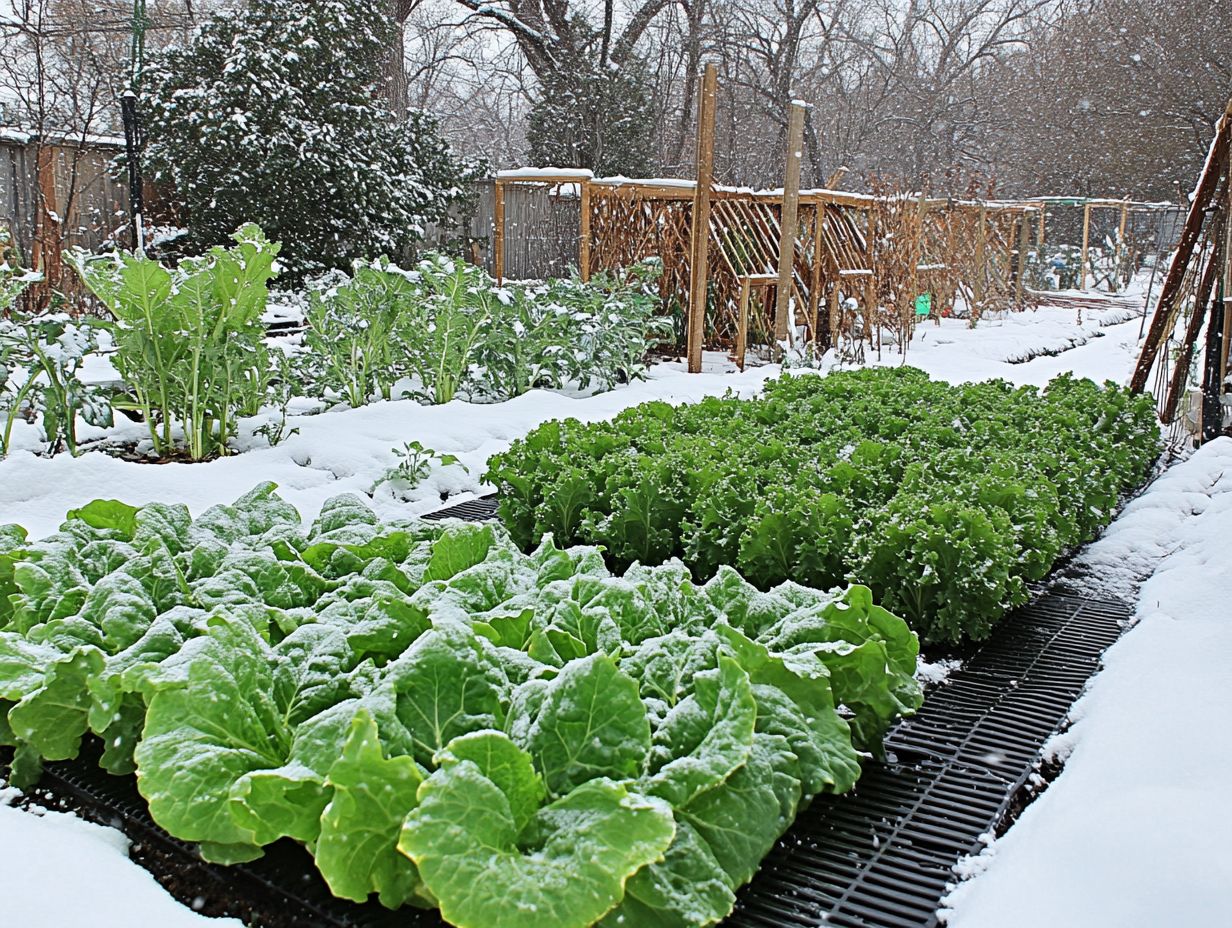
One notable advantage of using heat mats is their remarkable ability to shield seedlings from frost and cold temperatures that can impede their growth. These mats deliver a gentle, consistent warmth that promotes robust root development and accelerates germination an essential factor during unpredictable weather patterns.
When young plants encounter chilly conditions, they often struggle to establish themselves. This can lead to stunted growth or, in the worst cases, death. To fully harness the benefits of heat mats, position them strategically in locations that receive indirect sunlight, avoiding direct exposure that could result in excessive temperatures.
Combining the mats with humidity domes covers that help retain moisture can significantly enhance moisture retention, creating an ideal microenvironment for your delicate crops.
Regularly monitoring the temperature is crucial. Ensure that your seedlings bask in just the right amount of warmth to flourish.
Choosing the Right Heat Mat
Selecting the ideal heat mat is vital for enhancing your gardening endeavors. Consider factors such as temperature range, size, and compatibility with your seedling trays.
The Epic Seed Starting Heat Mat stands out as a top choice, offering consistent warmth that fosters rapid growth and enhances germination for various vegetable seeds.
Take a moment to consider your specific propagation needs; this can make all the difference. Recognize how different heat mats can influence the performance of your seedlings throughout the growing season.
Factors to Consider
When selecting a heat mat, several key factors deserve your attention, including size, power, and compatibility with your specific seedling trays and growing conditions.
Understanding these elements is essential for cultivating an optimal environment for both seedlings and indoor plants. The power of a heat mat plays a significant role in regulating soil temperature, which is crucial for seed germination and root development. Choosing the right power isn t just about meeting heat requirements; it’s equally important to prevent overheating, which can be harmful.
The size of the heat mat should match the dimensions of your trays. If you have a larger setup, you may need a mat that covers a bigger surface area to ensure even warmth. Ultimately, a thoughtful evaluation of these factors will lay the groundwork for a flourishing indoor garden.
Setting Up Heat Mats for Cold-Weather Crops
When setting up heat mats for winter seedlings in your cold-weather crops, think carefully about their placement and usage to maximize their effectiveness in the germination process. Your seedlings need warmth for optimal growth.
Proper placement is key; position the heat mats directly under the seedling trays and pair them with a humidity dome. This combination creates a nurturing environment for germination.
Consistent watering practices will help maintain the right moisture levels, supporting both the germination process and healthy root development.
Proper Placement and Usage
<pProper placement and usage of heat mats are essential for ensuring your seedlings receive the warmth they need for effective germination and growth. Position these mats in a well-ventilated area, ideally beneath your seed trays, to allow for optimal heat distribution.
Don’t overlook humidity domes; they play a significant role in trapping moisture and creating a consistent environment for your seeds during the germination process. While using heat mats, remember that adequate light conditions are just as crucial. Without sufficient light, your seedlings may stretch and weaken as they reach for it, undermining the very benefits that warmth provides.
By striking the right balance between heat, moisture, and light, you can cultivate the ideal conditions for robust seedling development.
Tips for Maximizing the Effectiveness of Heat Mats
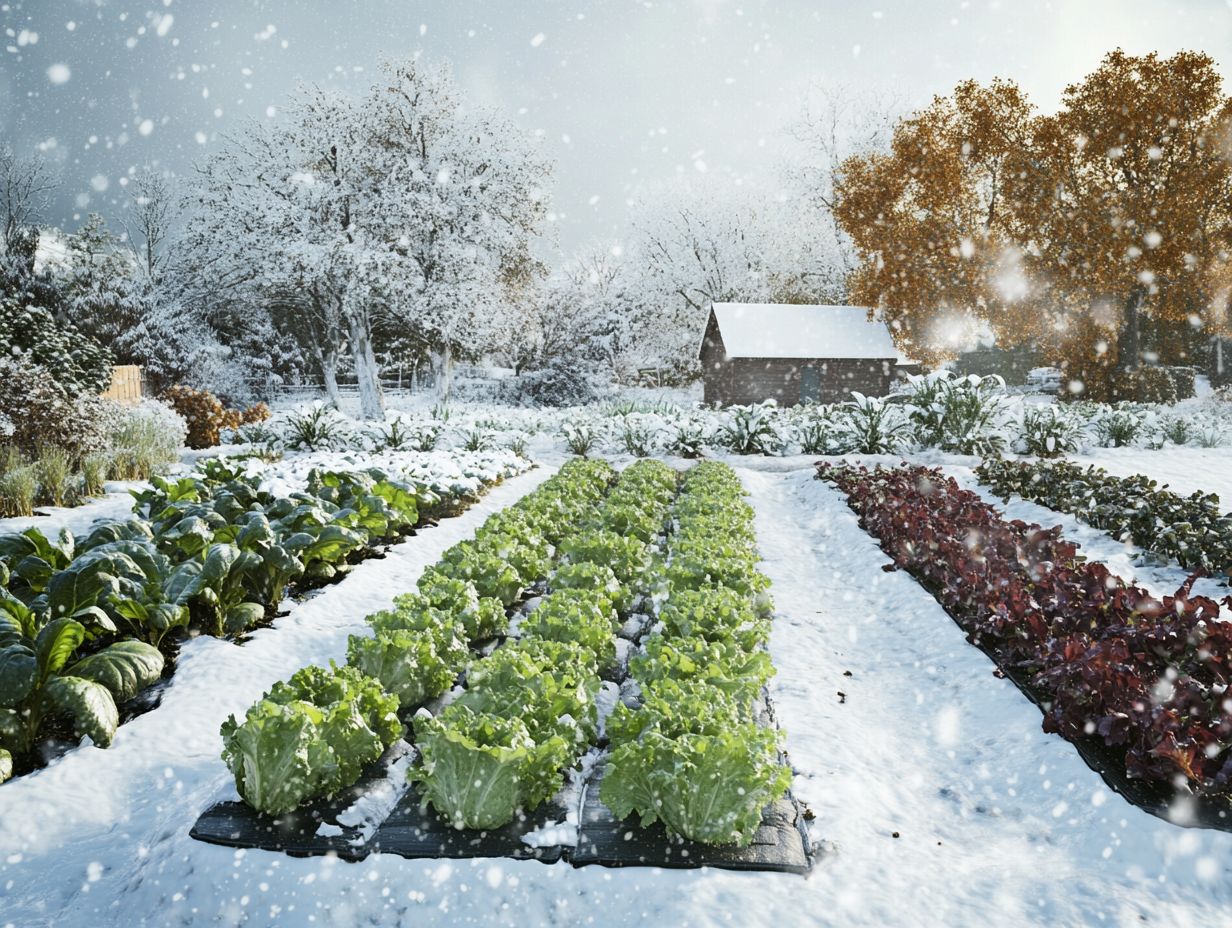
To truly maximize the effectiveness of heat mats, you must follow best practices that foster best seed sprouting and growth for your seedlings. This approach creates conditions that promote rapid growth, ensuring your plants flourish healthy.
Best Practices for Using Heat Mats
Using heat mats effectively requires maintaining the right soil temperature, ensuring consistent watering, and utilizing clear covers that keep moisture in.
Monitor the soil temperature with a reliable thermometer. This ensures your seeds receive the necessary warmth without overheating. If adjustments are needed, tweak the heat mat settings or reposition them for better airflow. A stable environment is essential for growth.
Pay attention to humidity levels. While humidity domes help retain moisture, remove them periodically to prevent mold and other issues. Striking the right balance will foster a healthier seedling population, ultimately enhancing your growing venture.
Common Mistakes to Avoid
Avoiding common mistakes with heat mats is essential for successful germination and growth of your seedlings. Mismanaging temperature and humidity can lead to various problems that hinder your plants’ development.
Potential Problems and How to Prevent Them
Understanding potential issues with heat mats, like excess warmth or insufficient humidity control, is crucial for nurturing healthy seedlings.
Recognizing these challenges early can spare you from disappointments as you cultivate your plants. When using heat mats, consistently monitor temperature levels. Ensure they stay within the optimal range for your specific seedlings.
Incorporate moisture trays or use a humidity dome to enhance humidity levels. By staying vigilant about these factors, you minimize the risks associated with heat mats, fostering stronger and more resilient growth in your indoor gardening.
Frequently Asked Questions
What are heat mats and why are they useful for cold-weather crops?
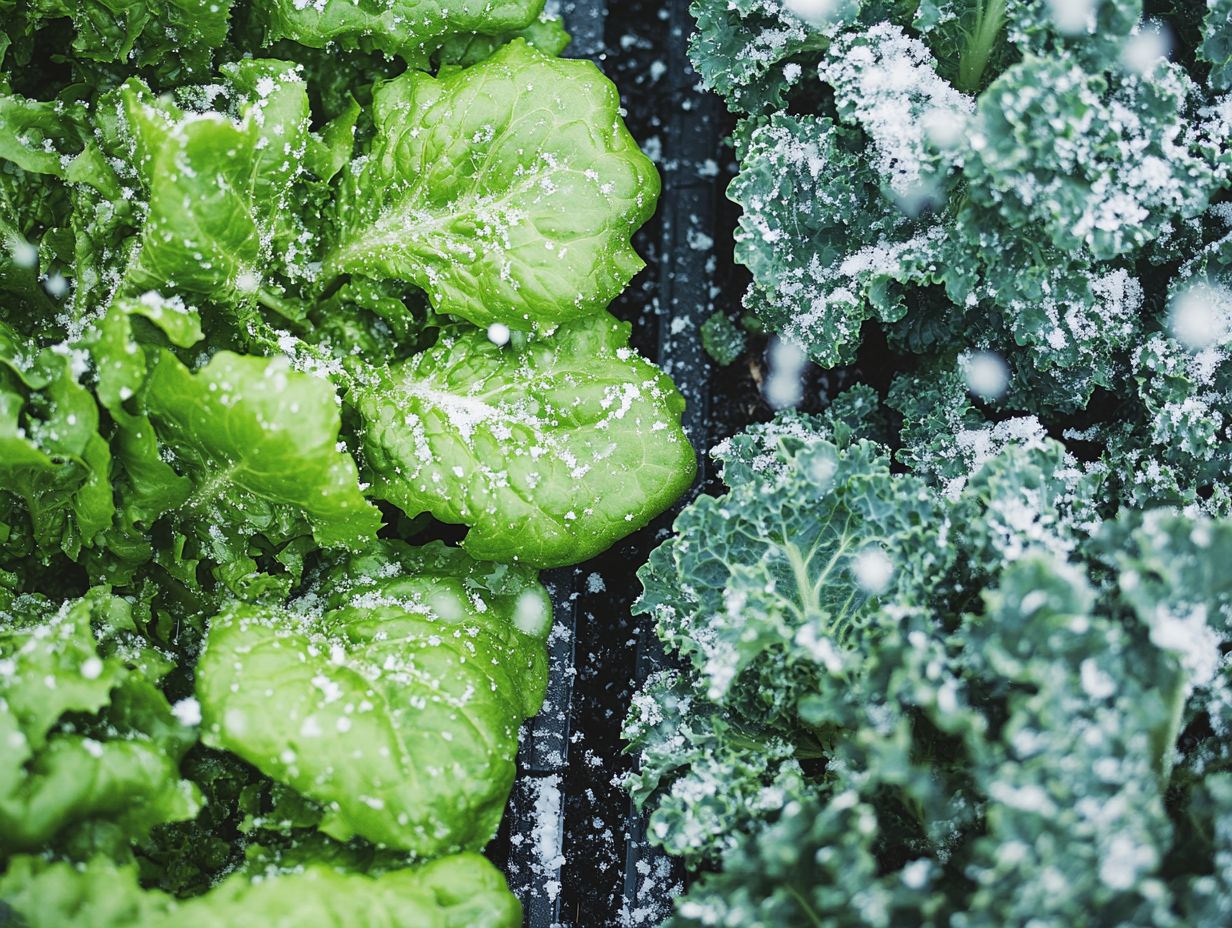
Heat mats are electrically heated mats that keep plant roots warm. They are ideal for growing cold-weather crops like lettuce, spinach, and kale. Additionally, learning how to use a greenhouse in winter gardening can further enhance your growing conditions. These mats provide consistent, gentle heat to maintain optimal temperatures for seed germination and plant growth.
How do I choose and use the right heat mat for my cold-weather crops?
When selecting a heat mat, consider the size of your growing area and the types of crops. Look for a mat with adjustable temperature settings to ensure your crops receive the appropriate heat.
To use heat mats, place them on a stable surface and plug them in. Put a tray or waterproof material on the mat before placing pots or seed trays on it to prevent water damage.
Do I need to monitor the temperature of my heat mats?
Yes! Regularly check your heat mats’ temperature to ensure they provide optimal heat for your crops. Use a thermometer to monitor the temperature and adjust the settings as needed.
How long should I keep my cold-weather crops on heat mats?
The duration depends on the specific crops you’re growing and their temperature needs. Some crops need heat mats only during their growing stage.
Others thrive when kept on heat mats throughout their entire growth cycle. Refer to the recommended growing instructions for your specific crops to ensure the best results!




